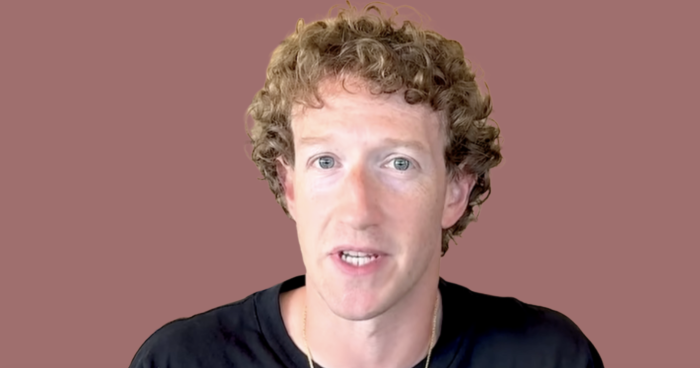Killing Net Neutrality Would Harm All Online Businesses

Good news: A recent poll found that Net Neutrality remains popular on both sides of the political spectrum.
Bad news: Trump’s FCC chairman, Ajit Pai, is still hell-bent on destroying it.
To justify his ill-conceived plan, Pai has been promoting the demonstrably false claim that the FCC’s decision in the 2015 Open Internet Order to ground Net Neutrality rules in Title II authority somehow dampened broadband investment.
Free Press has published more than 120 pages of robust analysis, relying on transparent and publicly available data, all showing that Pai’s investment claims are flawed on every level.
Our comprehensive report, It’s Working: How the Internet Access and Online Video Markets Are Thriving in the Title II Era, compiles this data and explains the reality behind broadband-investment decisions. Now we’re publishing a four-part blog series to break down the chairman’s lies piece by piece.
First, we explained that Pai’s aggregate broadband-industry investment numbers are simply wrong.
Next, we took him to task for relying on completely inadequate tools to measure broadband-industry investment, profits, performance and health.
Then we exposed the absurd and illogical reasoning behind his claim, which ignores everything that individual internet service providers say to their investors, and everything they’ve done to continue upgrading their networks since the Title II vote.
But even if there were a single shred of truth in Pai’s broadband-investment claims, he’d still be missing the point.
The internet is big. Really big.
Pai’s myopic analysis ignores a fundamental reality: The internet economy is much, much bigger than just the broadband providers alone.
Comcast provides access to the internet. It sells its customers the wire they use to connect to all of the content and services online.
The people and all of the companies that use the internet to connect to each other count for something too.
Pai’s disingenuous whining about broadband investment flat-out ignores these critical swaths of the internet economy and focuses on only the tiny fragment of it that ISPs represent.
If you were trying to evaluate a regulatory change regarding freight shipping, it would be negligent to assess only the impact on shipping companies. For a comprehensive understanding, you would also need to look at the impact on companies that depend on shipping for their businesses.
Which businesses depend on their customers having reliable, nondiscriminatory and high-capacity internet access to succeed in today’s economy?
Practically all of them.
More and more businesses operate solely online, providing services — like cloud computing and online video — that couldn’t exist without the internet.
Without sufficiently robust, open and fast internet access for the people who use their services, these players would not exist.
And without all of these valuable services and highly sought-after content online, internet access would be a pipe to nowhere, with far less demand for fast speeds and high-capacity connections.
Despite what Pai’s one-sided analysis would suggest, it’s crucial to examine all parts of the internet economy together when assessing the impact of Net Neutrality and Title II.
Since the FCC’s vote to reclassify internet access as a Title II service in 2015, the so-called “edge” providers have invested heavily and expanded rapidly.
In the “data processing, hosting, and related services” sector — which includes app-hosting services like Amazon Web Services (“AWS”) and video-streaming services like Netflix — total capital investment increased 26 percent in the year following the vote.
Online video in particular has seen tremendous growth.
In the two years after the FCC’s 2015 vote, the United States saw a 133-percent increase in new over-the-top (“OTT”) online-video services, creating tremendous options and choice and expanding the market with innovative new options for streaming and live video content.
In fact, more U.S. OTT video services launched in those two years than in the previous seven years combined.
Subscription services such as Amazon Prime, Hulu and Netflix have been making headlines, and for good reason. They have absolutely thrived on the open internet.
And while these relatively large companies draw the attention of the business pages, it’s important to remember that the benefits of increased choice and improved efficiency in delivery all flow back to internet users in the form of more diversity in video content and more affordable options.
The benefits of Title II
So how has Title II impacted these other key players in the internet economy?
Netflix spent twice as much on its streaming programming after the FCC’s vote than it did before, increased its capital expenditures by 60 percent and began a massive hiring expansion that nearly doubled the size of its workforce within two years:

Amazon Prime also doubled its programming spending and in particular increased spending on original content production five-fold. Notably, Amazon’s AWS hosting service also experienced an incredible 160-percent revenue increase in the two years after the FCC vote:

Hulu broke its own records in 2015 with the highest subscriber-growth numbers in the service’s history — and then reinvested those substantial revenue gains in its own streaming programming.
Smaller, newer subscription services are also succeeding in the Title II era. Click for the full It’s Working report and scroll to Part II to read more.
Another important aspect of this online-video expansion is the explosion of what are called Virtual Service Providers (“VSPs”), such as DirecTV Now and Sling TV, which offer OTT television services that compete directly with traditional cable and satellite packages.
Prior to the FCC’s 2015 vote, there was no functioning market for VSP services in this country.
Then the FCC restored Title II authority that February. Sling TV launched later that same month; PlayStation Vue followed in March and YipTV in May. Perhaps the biggest potential disruptor, DirecTV Now, began offering competitively priced service in November 2016, gaining over 200,000 subscribers in just one month. YouTube TV and Hulu With Live TV launched in early 2017.
And more VSPs are coming.
This burgeoning industry is making its mark.
The number of households with broadband access but no traditional television subscriptions rose by 37 percent in the two years following the FCC’s decision, compared to an increase of just 19 percent during the two years prior. This suggests that more and more families are choosing to rely exclusively on OTT services for their video content — a choice made more palatable and feasible by the massive growth in online-video options.
Market certainty
How much of this would have happened in the absence of the 2015 vote? We can’t know for certain.
But what’s clear is that the FCC’s decision to protect Net Neutrality under Title II gave OTT services the confidence that they could expand their online-video businesses without fear of ISP discrimination.
In other words, it gave them market certainty.
And despite the unjustified whining of big ISPs, that certainty has been good for everyone.
Content creators and access providers feed off of each other’s successes. As online video continues to thrive, the value people see in accessing that content continues to grow, and the ISPs selling that access continue to flourish.
Competition between edge providers and traditional cable operators has been a breath of fresh air in an often stagnant market, pushing incumbents of all kinds to innovate to better meet people’s needs.
This is the “virtuous cycle” of innovation and investment, grounded in evidence and embraced by the courts.
And this is one of the theories that motivated the FCC to implement strong Net Neutrality rules in the first place. It benefits not just the bottom lines of the ISPs and edge providers, but also internet users, who get cheaper access to better goods.
Pai’s myopic view
By brazenly ignoring the astounding growth of internet-edge companies and in particular online-video services, Chairman Pai is using an extremely narrow lens to assess a broad and thriving market.
His ISP investment claims tell only a fraction of the whole story — and as we’ve discussed before, even that myopic sliver of a tale is completely inaccurate.
Pai is fudging his numbers, cherry-picking the data, peddling false narratives and flat-out ignoring all but a sliver of the internet ecosystem he pretends to defend. He’s wrong on every imaginable level.
This isn’t an honest mistake or a casual accounting error. It’s a lie.
That is the only possible explanation for an FCC chairman and supposed public servant pushing out ISP-funded arguments that are verifiably rotten to the core.
Instead of engaging with real facts and data, Pai is knowingly capitalizing on manufactured evidence to support his ideological crusade to shred Net Neutrality protections — in flagrant defiance of the public interest he swore to serve.
To learn more, click here for the full Free Press report It’s Working: How the Internet Access and Online Video Markets Are Thriving in the Title II Era.
To fight back, click here and make your voice heard.





